Table of Contents
● Introduction
● Market overview
● Key design and material innovations
● Top sellers driving market trends
● Conclusion
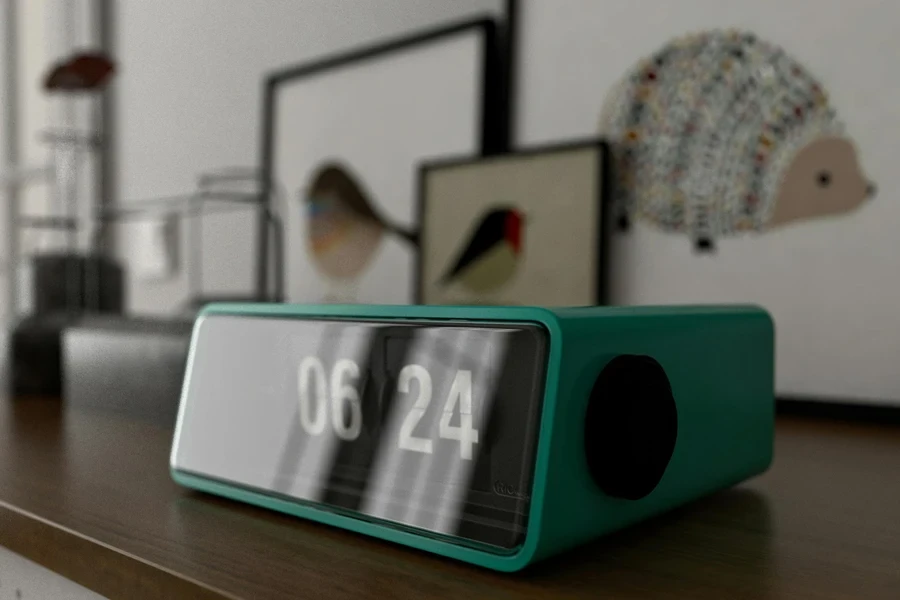
Introduction
Smart table clocks have transcended their traditional roles, merging cutting-edge technology with everyday functionality to redefine interaction with time. Initially designed to signal the start of a new day simply, these devices now integrate seamlessly into the fabric of digital lives, offering customizable features like voice control, connectivity, and ambient sensors. The evolution of smart table clocks reflects a broader trend toward smart home integration, where convenience and functionality are paramount. Companies are pushing the boundaries of what a table clock can do, from setting multiple alarms with varying sounds to controlling other smart devices within the home. This integration not only enhances the aesthetic of a living space but also boosts productivity and personal organization. As increasingly valued technology that adapts to lifestyles, smart table clocks stand out as both a focal point of modern design and a hub of personal efficiency. Their continued innovation and adaptation are pivotal as they evolve to meet the sophisticated demands of today’s consumers.
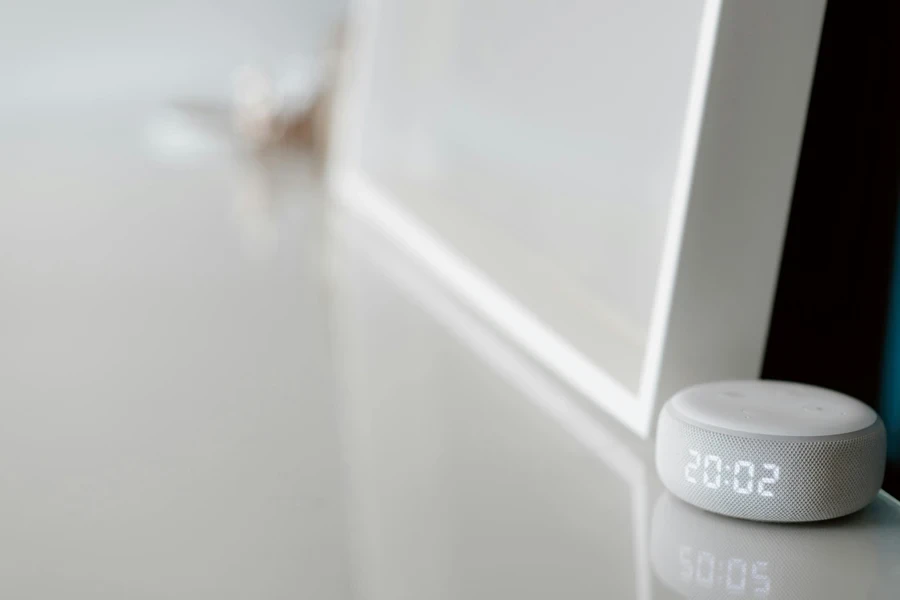
Market overview
The smart clock market is experiencing robust growth, projected to reach a valuation of $2.8 billion by 2030, expanding at a compound annual growth rate (CAGR) of 17.2%, according to KBV research. The rapid expansion is largely driven by increasing consumer demand for home automation products. Innovations in this sector typically integrate digital assistants and enhance home automation connectivity, contributing significantly to market growth, especially in regions like North America which capture a major share of the market revenue.
Market trends indicate a shift towards integrating smart clocks with broader smart home ecosystems, enhancing their appeal by doubling as central hubs for device management. This integration allows for the control of lights, thermostats, and security systems directly from the clock, facilitated by voice command capabilities. The trend towards these multifunctional devices is supported by growing disposable incomes, enabling more consumers to invest in advanced technology. However, challenges such as the need for frequent charging and high initial costs could temper market growth, balancing the scales between innovative functionality and consumer convenience, according to KBV research.
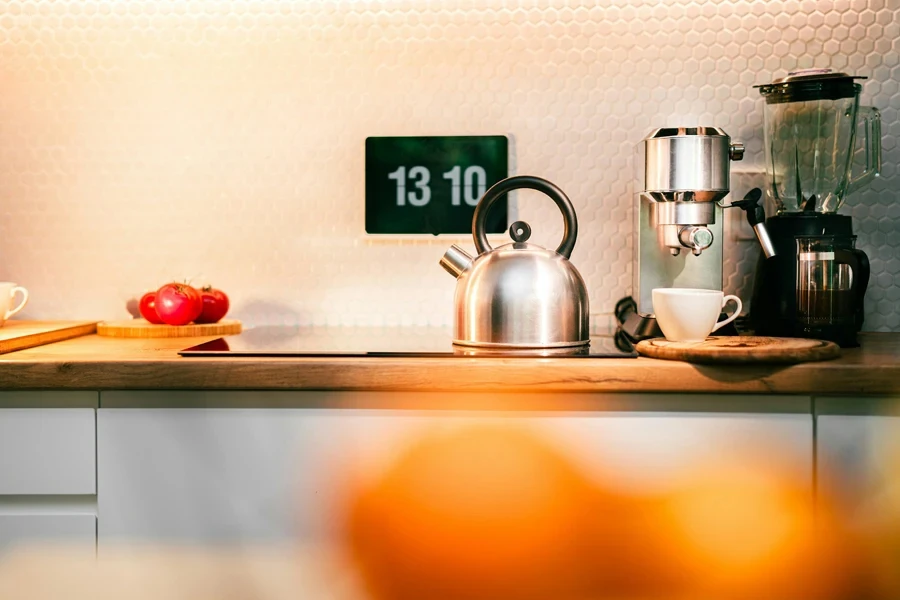
Key design and material innovations
Enhanced display features
Enhanced display features in smart table clocks are revolutionizing how users interact with time. Large, customizable digital displays improve visibility and user interactivity, accommodating a variety of ambient light conditions. These clocks offer adjustable settings for brightness and font size, which cater to user preferences in different environments, whether it’s a dimly lit bedroom or a brightly lit office. This flexibility ensures that the clock not only functions optimally but also fits seamlessly into any room’s aesthetic, providing a user-friendly experience that complements modern lifestyle demands.
Advanced material choices
Advanced material choices in smart table clocks reflect a shift towards sustainability and aesthetic integration within home decor. High-quality polymers and composite materials are commonly used for their durability and lightweight properties, offering a modern look that fits well in various interior designs. Additionally, the incorporation of natural materials like wood or wood-like finishes bridges the gap between traditional craftsmanship and contemporary technology. These material innovations not only enhance the visual appeal of smart table clocks but also contribute to their longevity and environmental sustainability.
Environmental monitoring
Smart table clocks have evolved to include environmental monitoring features, enhancing their utility beyond timekeeping. Integrated sensors within these clocks can now track indoor conditions such as temperature and humidity, providing users with essential environmental data. This capability turns the smart table clock into an informative hub, helping users maintain optimal living conditions by adjusting heating or cooling systems accordingly. This integration of environmental sensors not only adds to the functionality of the clocks but also promotes a healthier, more comfortable home environment.
Interactive controls
Smart table clocks now boast interactive controls that enhance user convenience and modernize their functionality. Touch-sensitive interfaces and compatibility with popular voice-controlled assistants enable effortless interaction and adjustments. Users can set alarms, check the weather, or manage other connected devices through simple gestures or voice commands, without the need to physically interact with the clock. This hands-free control technology makes smart table clocks a central part of the increasingly connected and automated home ecosystem, providing a seamless and intuitive user experience.
Charging capabilities
Smart table clocks now frequently feature built-in charging capabilities, addressing the practical needs of today’s tech-savvy users. These clocks often include USB ports and wireless charging surfaces, allowing for the convenient powering of smartphones and other electronic devices right from the bedside or desk. This dual functionality not only saves space but also enhances the utility of the clock, making it a valuable addition to any setting where keeping devices charged is a priority.
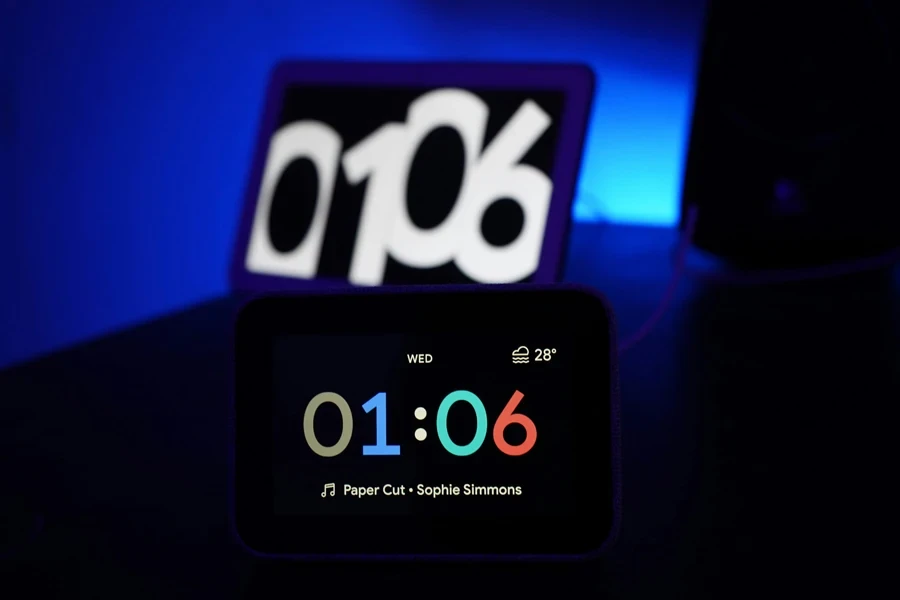
Top sellers driving market trends
Integration with digital assistants
Smart table clocks that integrate with digital assistants are increasingly popular, as noted by Google. These clocks allow users to control smart home devices, set reminders, and get weather updates through voice commands. This integration provides a hands-free experience, enhancing user convenience and making these clocks central hubs in smart home ecosystems. For example, clocks with built-in assistants can suggest the best time to set alarms based on the user’s schedule and previous alarm history, as well as gradually increase screen brightness to mimic sunrise, promoting a natural wake-up process. These features are designed to create a seamless user experience, allowing users to perform multiple tasks with a single voice command, such as turning off lights, setting the thermostat, and playing relaxing music before bed.
Enhanced user interfaces and design features
Many leading models now include touch-sensitive controls and customizable displays, allowing for easy personalization. According to KBV research, these features make the clocks more intuitive and user-friendly, meeting consumer expectations for functionality and ease of use. The integration of environmental sensors to monitor room conditions like temperature and humidity addresses the growing interest in maintaining a comfortable and healthy living environment. For instance, smart clocks can automatically adjust their brightness based on the ambient light in the room or switch to a “dark mode” during nighttime to prevent sleep disruption. Some models even provide visual and auditory cues to improve sleep hygiene, such as dimming lights gradually at bedtime and playing soothing sounds.
Advanced charging capabilities
Many top-selling models come with USB ports and wireless charging options, which are highly valued by users. According to hypnopedia, these features enhance the clock’s functionality by serving as convenient charging stations for smartphones and other devices. The inclusion of multiple USB ports allows users to charge several devices simultaneously, reflecting the modern need for multifunctional devices that save space and improve efficiency in both personal and professional settings. Wireless charging pads built into the base of the clock provide a clutter-free solution for powering devices overnight. Additionally, some models feature fast-charging technology, reducing the time needed to fully charge devices and making these clocks even more practical for busy users.
Aesthetic appeal and variety in design
Manufacturers are focusing on creating aesthetically pleasing designs that blend seamlessly into various home decors. Offering a variety of styles and finishes, from sleek and modern to traditional looks, allows these clocks to appeal to a broader audience, according to pianalytix. This attention to design ensures that the clocks not only perform well but also complement the aesthetic of any room, which significantly influences consumer purchasing decisions. Customizable clock faces and decorative elements enable consumers to match their smart clocks with their personal style and bedroom decor. For example, some models come with interchangeable covers or customizable LED displays that allow users to change the appearance of the clock to suit their mood or the season.
Market strategies and consumer response
Manufacturers are responding to consumer demands by continuously updating features and improving product functionalities. Strategies include integrating new technologies such as artificial intelligence for predictive alarm setting based on user habits and machine learning algorithms to enhance voice recognition capabilities. Consumer feedback is actively used to refine and enhance product offerings, ensuring that smart table clocks remain relevant and desirable in a rapidly evolving market. For instance, regular software updates can add new features and improve existing ones, such as better integration with other smart home devices or enhanced privacy controls. By focusing on user-centered design and functionality, manufacturers are able to meet the diverse needs of consumers and maintain a competitive edge in the market.
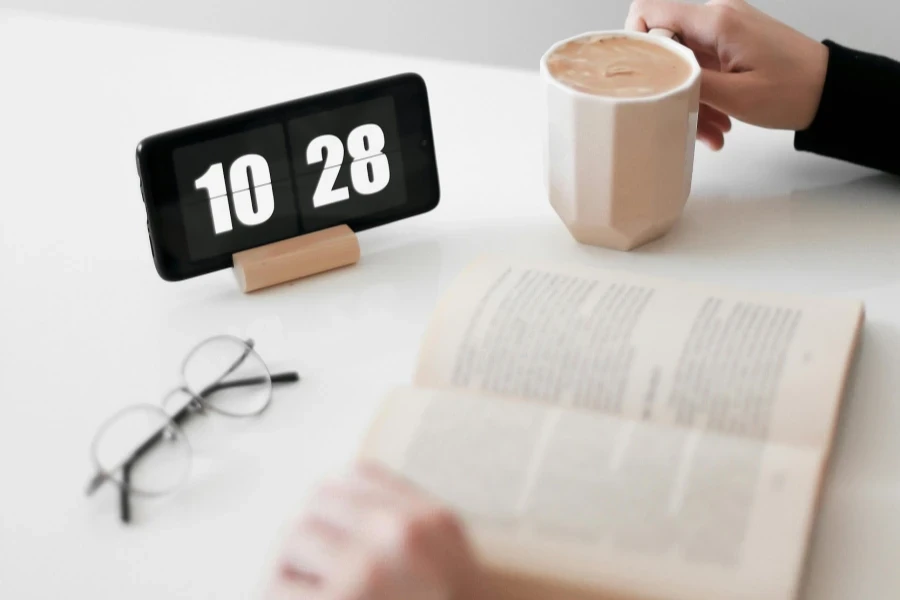
Conclusion
Smart table clocks have revolutionized both personal and professional spaces by integrating advanced functionalities that enhance productivity and convenience. In personal realms, these clocks serve as multifunctional devices, combining timekeeping with features like environmental monitoring, voice control, and smart home integration, thereby simplifying daily routines and promoting a healthier living environment. In professional settings, they aid in maintaining efficient schedules and providing seamless control over office environments. Looking forward, the market for smart table clocks is expected to witness further advancements, such as enhanced artificial intelligence capabilities, improved interoperability with a broader range of smart devices, and more sophisticated environmental sensors. These innovations will likely expand the utility of smart table clocks, making them even more integral to both home and workplace settings, ultimately pushing the boundaries of how to interact with technology in daily lives.




